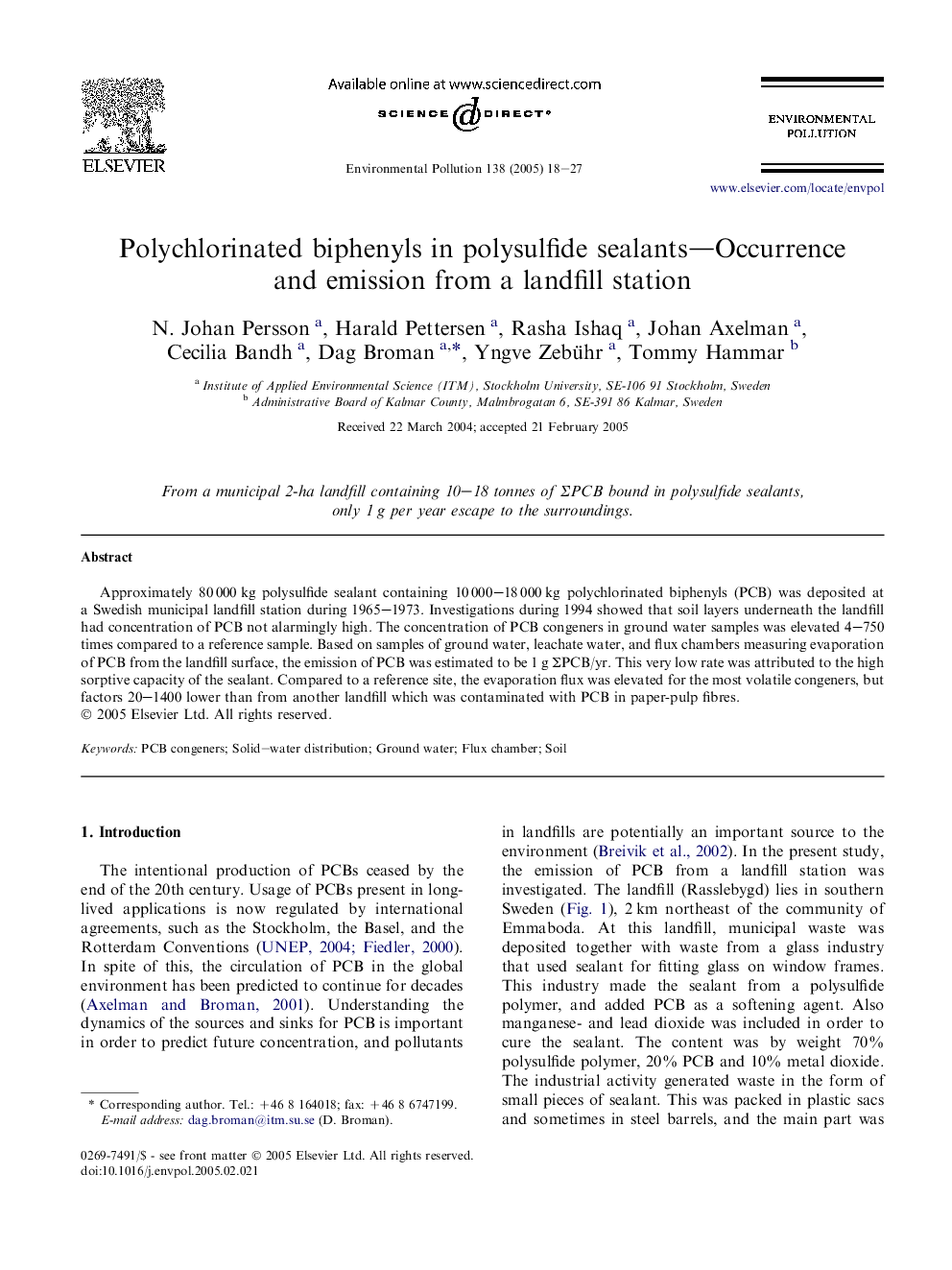| Article ID | Journal | Published Year | Pages | File Type |
|---|---|---|---|---|
| 9456279 | Environmental Pollution | 2005 | 10 Pages |
Abstract
Approximately 80â000 kg polysulfide sealant containing 10â000-18â000 kg polychlorinated biphenyls (PCB) was deposited at a Swedish municipal landfill station during 1965-1973. Investigations during 1994 showed that soil layers underneath the landfill had concentration of PCB not alarmingly high. The concentration of PCB congeners in ground water samples was elevated 4-750 times compared to a reference sample. Based on samples of ground water, leachate water, and flux chambers measuring evaporation of PCB from the landfill surface, the emission of PCB was estimated to be 1 g ΣPCB/yr. This very low rate was attributed to the high sorptive capacity of the sealant. Compared to a reference site, the evaporation flux was elevated for the most volatile congeners, but factors 20-1400 lower than from another landfill which was contaminated with PCB in paper-pulp fibres.
Related Topics
Life Sciences
Environmental Science
Environmental Chemistry
Authors
N. Johan Persson, Harald Pettersen, Rasha Ishaq, Johan Axelman, Cecilia Bandh, Dag Broman, Yngve Zebühr, Tommy Hammar,
